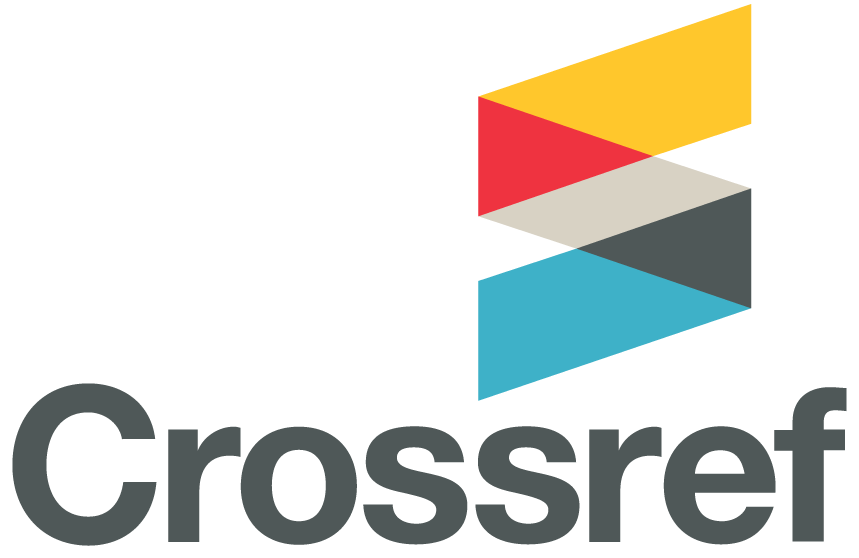the Evaluation of Marginal Fitness of CAD/CAM Monolithic Zirconia Crowns Fabricated using Different Parameter of CBCT and laboratory Scanner
DOI:
https://doi.org/10.32828/mdj.v21i1.945Keywords:
Cone beam computed tomography CBCT, laboratory scanner, marginal fit, zirconia crownAbstract
Aim: to compare the marginal fitness of zirconia crowns made using laboratory scanners and various CBCT parameter settings.
Methods: An extracted premolar tooth was prepared for crown preparation criteria. The scanning of the prepared tooth using Medit T710 extraoral lab scanner (group A), and CBCT scans were made with (planmeca promax) CBCT at different setting parameters: (group B) with a field of view 80*50mm and 150um voxel size and (group C) with a field of view 50*50 mm and 75um voxel size. The 3D pictures from the CBCT scans and laboratory scanner were then imported into Exocad software, and a crown design was finished. The data was transmitted to CAM software, which was used to mill the crowns from CAD/CAM zirconia by a 5-axis milling machine. A stereo-microscope was used to assess the vertical marginal gap. A total of 120 points were measured throughout the three groups. Vertical marginal gap mean values were obtained by averaging the readings for each specimen. The data were analyzed using one-way ANOVA, and the Post hoc Tukey's test was performed to compare the significance of the difference between groups.
Result: There was no significant difference between the laboratory scanner (group A) and CBCT scan (group C) with (FOV) 50*50mm and 75um voxel size. However, there was a significant difference between the laboratory scanner and CBCT scan group with (FOV) 80*50mm and 150um voxel size (group B), and also between CBCT scan groups with different parameters.
Conclusion: Crowns made with the laboratory scanner exhibited smaller marginal gaps than crowns made using CBCT images with various settings parameters. All three groups were able to fabricate monolithic zirconia crowns with a marginal gap of less than 120um.
Keyword:
Cone beam computed tomography CBCT, laboratory scanner, marginal fit, zirconia crown.
References
References:
1. Abduo J, Lyons K, Swain M. Fit of zirconia fixed partial denture: a systematic review. J. Oral Rehabil.2010;37(11):866-876.
2. Park JM, Hong YS, Park EJ, Heo SJ, Oh N. Clinical evaluations of cast gold alloy, machinable zirconia, and semiprecious alloy crowns: A multicenter study. J Prosthet Dent. 2016;115(6):684-691.
3. Felton DA, Kanoy BE, Bayne SA, Wirthman GP. Effect of in vivo crown margin discrepancies on periodontal health. J. Prosthet. Dent. 1991;65(3):357-364.
4. McLean JW. The estimation of cement film thickness by an in vivo technique. Br dent j. 1971;131(3):107-111.
5. Koch GK, Gallucci GO, Lee SJ. Accuracy in the digital workflow: From data acquisition to the digitally milled cast. J Prosthet Dent. 2016;115(6):749-754.
6. Delong R, Heinzen M, Hodges JS, Ko CC, Douglas WH. Accuracy of a system for creating 3D computer models of dental arches. J. Dent. Res.2003;82(6):438-442.
7. Nedelcu RG, Persson AS. Scanning accuracy and precision in 4 intraoral scanners: an in vitro comparison based on 3-dimensional analysis. J Prosthet Dent. 2014;112(6):1461-1471.
8. Zimmermann M, Mehl A, Mörmann WH, Reich S. Intraoral scanning systems-a current overview. Int. J. Comput. Dent. 2015;18(2):101-129.
9. Kim, J. H., Jeong, J. H., Lee, J. H., & Cho, H. W. (2016). The fit of lithium disilicate crowns fabricated from conventional and digital impressions was assessed with micro-CT. J Prosthet Dent. 2016; 116(4): 551-557.
10. Imburgia M, Logozzo S, Hauschild U, Veronesi G, Mangano C, Mangano FG. Accuracy of four intraoral scanners in oral implantology: a comparative in vitro study. BMC oral health. 2017;17(1):1-3.
11. Marti, A. M., Harris, B. T., Metz, M. J., Morton, D., Scarfe, W. C., Metz, C. J., & Lin, W. S. Comparison of digital scanning and polyvinyl siloxane impression techniques by dental students: instructional efficiency and attitudes towards technology. Eur J Dent Educ. 2017; 21(3): 200-205.
12. Coachman C, Calamita MA, Coachman FG, Coachman RG, Sesma N. Facially generated and cephalometric guided 3D digital design for complete mouth implant rehabilitation: a clinical report. J of prosthetic Dent. 2017;117(5):577-586.
13. Şeker E, Ozcelik TB, Rathi N, Yilmaz B. Evaluation of marginal fit of CAD/CAM restorations fabricated through cone beam computerized tomography and laboratory scanner data. J of prosthet Dent. 2016;115(1):47-51.
14. Kale E, Cilli M, Özçelik TB, Yilmaz B. Marginal fit of CAD-CAM monolithic zirconia crowns fabricated by using cone beam computed tomography scans. J Prosthet Dent. 2020;123(5):731-737.
15. Wismeijer D, Mans R, van Genuchten M, Reijers HA. Patients' preferences when comparing analogue implant impressions using a polyether impression material versus digital impressions (Intraoral Scan) of dental implants. Clin. Oral Implants Res. 2014;25(10):1113-1118
16. Joda, T., Brägger, U., & Gallucci, G. Systematic literature review of digital three-dimensional superimposition techniques to create virtual dental patients. Int J Oral Maxillofac Implants. 2015; 30(2).
17. Worthington P, Rubenstein J, Hatcher DC. The role of cone-beam computed tomography in the planning and placement of implants. J Am Dent Assoc. 2010; 141:19S-24S.
18. Abdul Khaliq A., Al-Rawi I., Fracture strength of laminate veneers using different restorative materials and techniques (A comparative in vitro study). J Bagh Coll Dent. 2014; 26(4): 1-8.
19. James A.E., B. Umamaheswari,C. B. Shanthana Lakshmi. Comparative Evaluation of Marginal Accuracy of Metal Copings Fabricated using Direct Metal Laser Sintering, Computer Aided Milling, Ringless Casting, and Traditional Casting Techniques. Contemp. Clin. Dent.2018;9(3):421-426
20. Yildirim B., Effect of porcelain firing and cementation on the marginal fit of implant supported metal-ceramic restorations fabricated by Additive or subtractive manufacturing methods. J. Prosthet. Dent.2020;124(4):4761-4676.
21. Belgin, H. B., Kale, E., Özçelik, T. B., & Yilmaz, B. Marginal fit of 3-unit CAD–CAM zirconia frameworks fabricated using cone beam computed tomography scans: an experimental study. Odontology. 2022; 1-10.
22. Stefanelli LV, Franchina A, Pranno A, et al. Use of intraoral scanners for full dental arches: could different strategies or overlapping software affect accuracy? Int J Environ Res Public Health 2021;18(19):9946
23. Elkersh, N. M., Fahmy, R. A., Zayet, M. K., & Gaweesh, Y. S. Accuracy of Models Obtained from Digital Impressions Versus Scanning of Conventional Impressions. 2021.
24. Hassan, B., Couto Souza, P., Jacobs, R., de Azambuja Berti, S., & van der Stelt, P. Influence of scanning and reconstruction parameters on quality of three-dimensional surface models of the dental arches from cone beam computed tomography. Clin. Oral Investig. 2010; 14, 303-310.
25. Al‐Rawi, B., Hassan, B., Vandenberge, B., & Jacobs, R. Accuracy assessment of three‐dimensional surface reconstructions of teeth from cone beam computed tomography scans. J. Oral Rehabil. 2010: 37(5), 352-358
26. Sang, Y. H., Hu, H. C., Lu, S. H., Wu, Y. W., Li, W. R., & Tang, Z. H. Accuracy assessment of three-dimensional surface reconstructions of in vivo teeth from cone-beam computed tomography. Chin. Med. J. 2016; 129(12): 1464-1470.
27. Elkersh, N. M., Fahmy, R. A., Zayet, M. K., & Gaweesh, Y. S. Accuracy of Models Obtained from Digital Impressions Versus Scanning of Conventional Impressions. 2021.
Downloads
Published
Issue
Section
Categories
License
Copyright (c) 2025 Maymona Fadhil AL janaby, Haider H.Jasim, Sami Bissasu

This work is licensed under a Creative Commons Attribution 4.0 International License.
The Journal of Mustansiria Dental Journal is an open-access journal that all contents are free of charge. Articles of this journal are licensed under the terms of the Creative Commons Attribution International Public License CC-BY 4.0 (https://creativecommons.org/licenses/by/4.0/legalcode) that licensees are unrestrictly allowed to search, download, share, distribute, print, or link to the full texts of the articles, crawl them for indexing and reproduce any medium of the articles provided that they give the author(s) proper credits (citation). The journal allows the author(s) to retain the copyright of their published article.
Creative Commons-Attribution (BY)








